Metal teapots: types, pros and cons
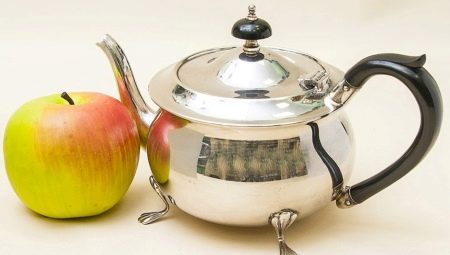
It is easy to guess that a teapot is usually called a small vessel for brewing tea.
The prototype of this dish was ceramic kettles for boiling water and bronze vessels for wine, which were actively used in ancient China thousands of years ago.
There are many types of teapots, but today we will consider metal models.
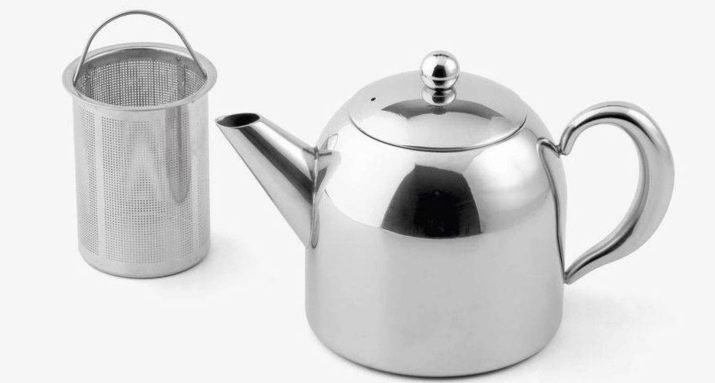
What does it look like?
The design of a teapot for brewing tea is quite simple. These are dishes, as a rule, round in shape, having a spout for pouring a drink and a sieve for sifting out the tea leaves.
The strainer can be built into the kettle in the form of a filter or suspended from its spout.
There is a special hole in the lid of the teapot. It promotes correct brewing as well as the passage of air and steam.

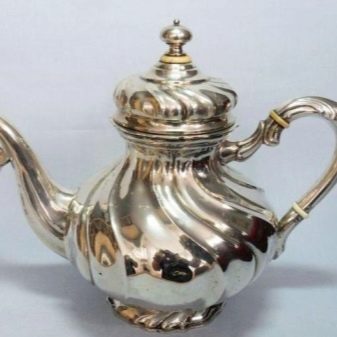
Advantages and disadvantages
Teapots made of metal have their own advantages and disadvantages.
The pros are as follows:
- reliability and durability;
- metal keeps the drink warm for a long time;
- attractive appearance;
- easy care.
There are also disadvantages:
- a coating of low-quality metals can react with tannic acid, which is contained in tea leaves, and as a result, the drink acquires a metallic taste;
- you can get burns, since the surface is very hot, for the same reason, you cannot put metal kettles on a table without a stand.
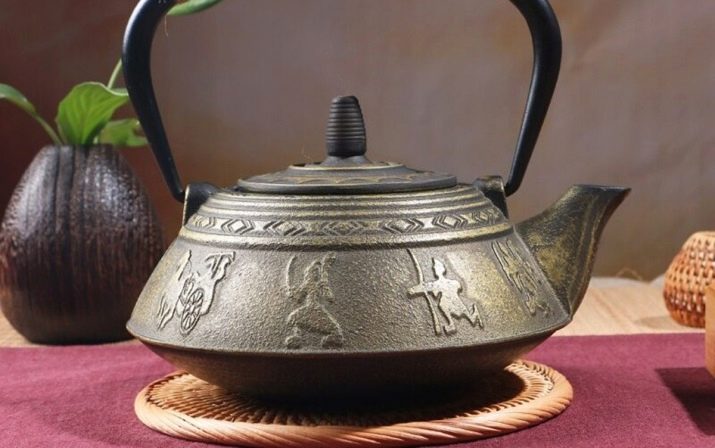
Varieties
Today, teapots for brewing tea are made from a variety of metals, which have both advantages and disadvantages. Typically, metal teapots are of the following types.
- Made of stainless steel. It is a very strong and durable material.The steel teapot can withstand high temperatures and has an attractive appearance. But the surface of such dishes should not be cleaned with abrasive products, as they may be scratched.

- Cast iron... The homeland of cast iron teapots is Ancient China. They are heavy, strong and durable, but they should be protected from impact. These vessels come in a variety of shapes and are often decorated with décor. The thick bottom and sides retain heat for a long time, fully revealing the true taste and aroma of strong teas, but are not suitable for light varieties with a refined taste. Due to the tendency to rust (since cast iron has an iron component), such vessels are covered with enamel inside.

- Enameled. These are the same cast iron teapots, but completely covered with enamel. Its layer makes the dishes even more durable. These teapots are easy to maintain and have an aesthetic appearance. You should be aware that an enamel teapot can crack from a sudden change in temperature, you cannot boil water in it, it does not tolerate shocks.
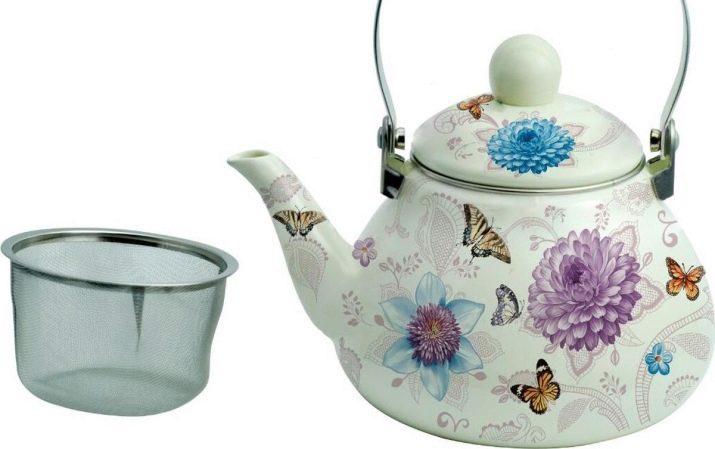
- Copper. Such teapots are not only utensils for brewing tea, but also a very beautiful, stylish and not cheap thing in the interior. Copper teapots can be tin-plated inside (coated with a thin layer of tin, which protects the copper from corrosion) and non-tinned. Copper cookware distributes heat well and has antiseptic properties. It is recommended to wash copper dishes in warm water without abrasives, with soft sponges, and be sure to wipe dry.
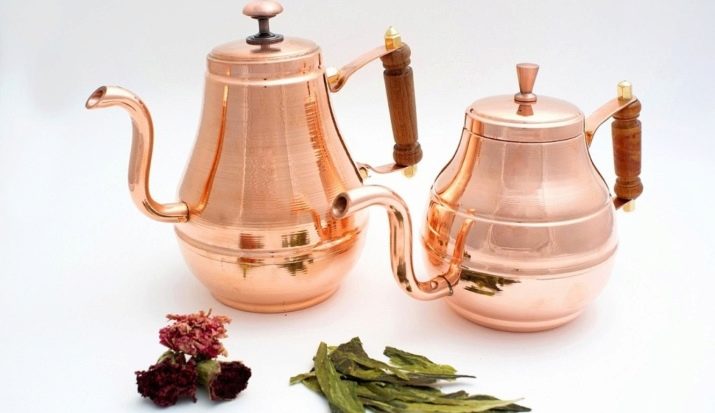
- Brass. Brass is an alloy based on copper and zinc, with the addition of tin, nickel and some other metals. These teapots are not cheap, but very effective, many of them are antique relics. They are usually very elegant and have a wooden handle. Brass teapots are also available in tinned food tin and non-tinned. They require careful and delicate handling.

- Nickel plated. The nickel plated teapot teapots shine beautifully and are very practical. They are easy to care for, durable and hygienic. They should be washed with hot water.
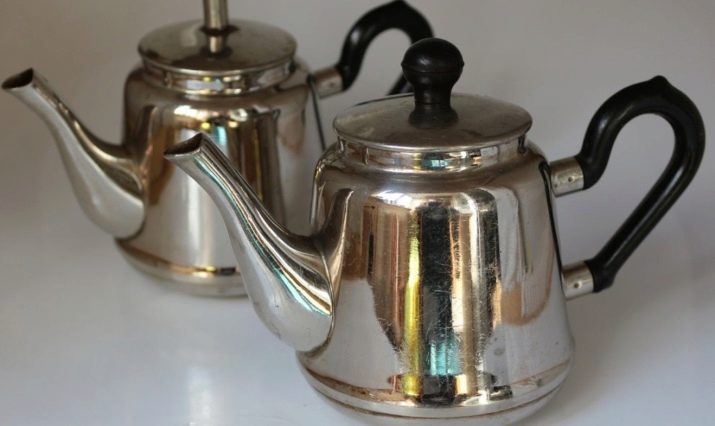
Selection recommendations
In order to choose the right quality metal teapot, when buying, pay attention to the following details.
- A teapot is best purchased at a specialty store that sells quality teas and coffee, or at a good point of sale for tableware.
- Ideally, you need to purchase several teapots of different sizes in order to brew tea for everyday use and in case of the arrival of guests. The first option can have a volume of 1 liter, the second - 2 liters or more.
- A classic round teapot is preferable, it evenly distributes and retains heat, and also perfectly reveals the taste and aroma of tea leaves.
- Carefully inspect the brewing container; it should not have chips, cracks or other defects.
- The lid must fit snugly against the kettle and must have a small hole for steam to escape.
- An ideal teapot spout is thick at the base and thin at the end; it should point upwards and be firmly attached to the teapot.
- The handle should be comfortable to grip the mold and positioned so that the hand does not touch the hot metal.
Tasty and aromatic tea drunk early in the morning energizes people for many hours of the working day. A properly selected metal teapot will help you in preparing this wonderful drink and will give you an aesthetic pleasure from contemplating its appearance.
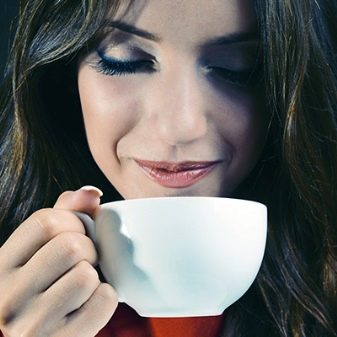
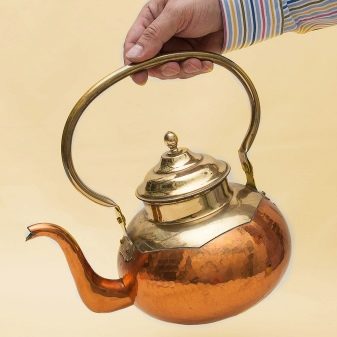
You will learn more about metal teapots by watching the following video.








